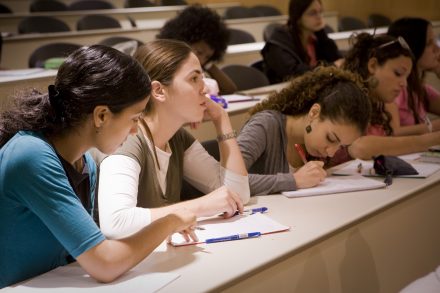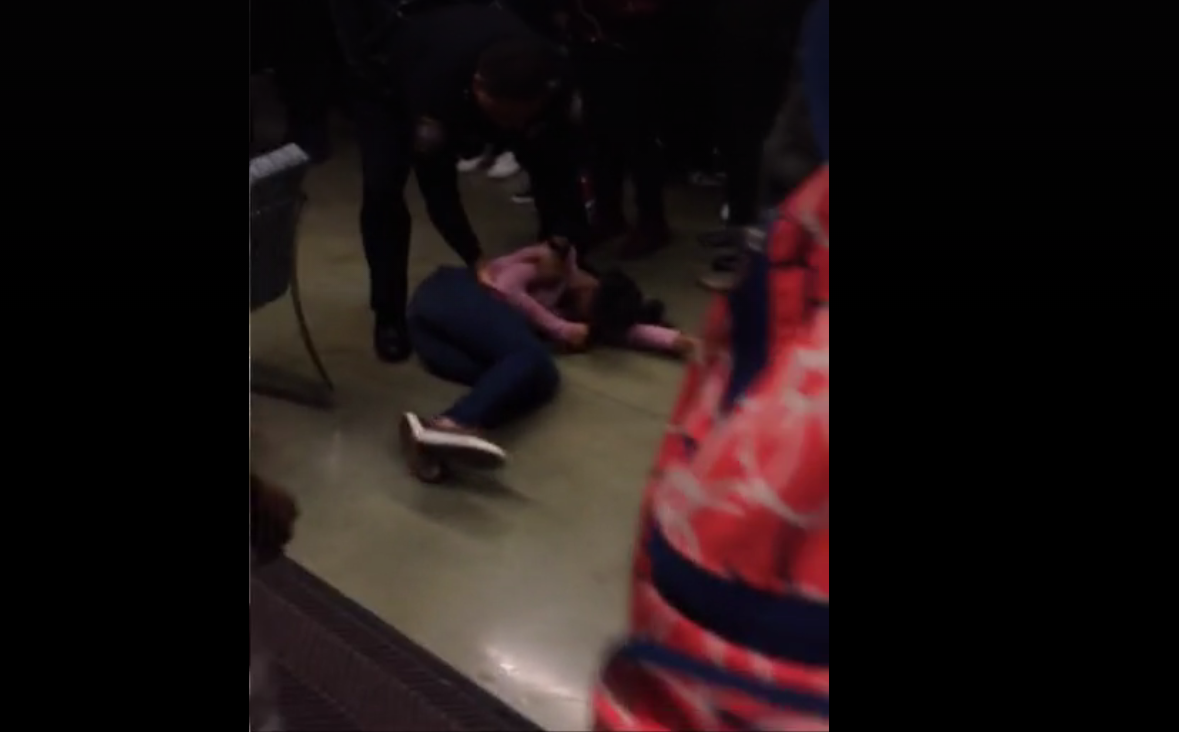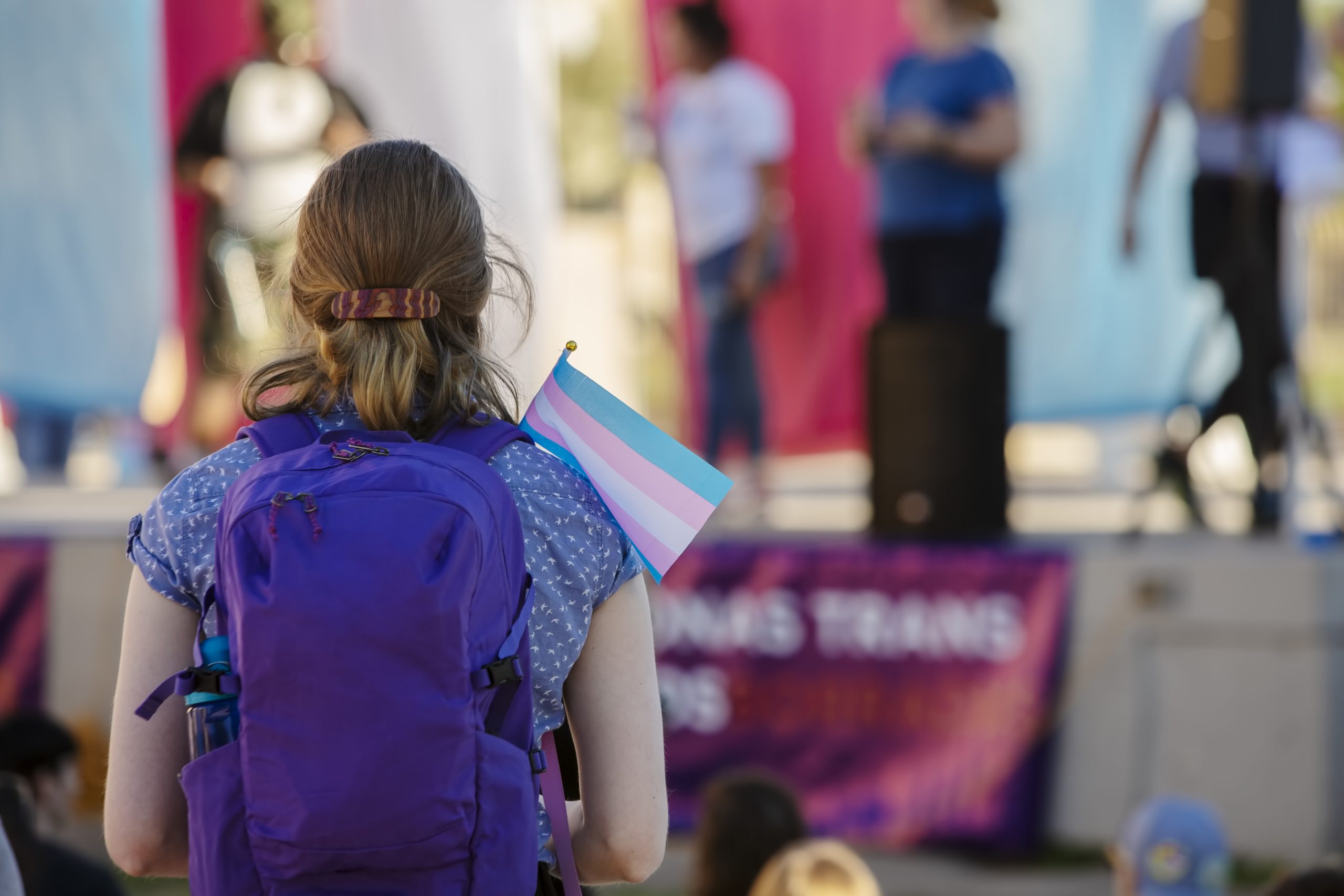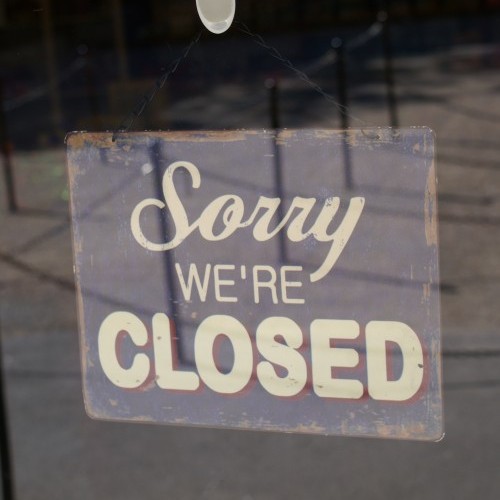Abortion rights, women of color, and LGBTQI+ people are under attack. Pledge to join us in fighting for gender justice.
Let Her Learn – What About Girls?

 We’ve all seen the headlines about Black boys being pushed out of the classroom into the criminal justice system. The academic and other in-school struggles of boys have received lots of attention from both educators and the media. And not to take anything away from the challenges that boys of color, in particular, are facing, but we don’t often hear much about girls and how they are doing in school.
We’ve all seen the headlines about Black boys being pushed out of the classroom into the criminal justice system. The academic and other in-school struggles of boys have received lots of attention from both educators and the media. And not to take anything away from the challenges that boys of color, in particular, are facing, but we don’t often hear much about girls and how they are doing in school.
In fact, there is a widely held assumption that girls are doing just fine in school, and certainly, girls and women are making great strides. Women now outpace men in educational attainment, with growing percentages of Latinas and Black women gaining college degrees, among many other academic and professional achievements. But despite this progress, many girls face substantial barriers to success in school.
The untold stories of America’s girls and their educational experiences
Having advocated for decades on behalf of girls and women seeking equal educational opportunities, we at the National Women’s Law Center set out to delve deeper into the often untold stories and educational experiences of a diverse group of girls. Specifically, we wanted to know what girls need to be safe and successful in school. To do this, we focused on several groups of girls: girls of color, girls in foster care, survivors of sexual violence and harassment, girls who have experienced homelessness, girls involved in the juvenile justice system, girls with disabilities, LGBTQ girls, and pregnant and parenting girls. In order to better understand their experiences, we analyzed multiple government datasets, held focus groups across the country, and conducted a first of its kind national survey of 1,003 girls. What we learned from and about girls has major implications for how our society collectively understands and addresses the problem of school pushout.
Every year, thousands of girls are pushed out of school as a result of a variety of often overlapping educational barriers, including homelessness, family instability, discriminatory discipline practices, society’s collective failure to prevent or adequately address harassment and sexual violence, and the failure of schools to recognize and properly respond to trauma.
Yet the typical, often boy-focused, public conversation around the school-to-prison pipeline and school pushout more generally often focuses primarily or exclusively on discipline policies and practices. And while that’s certainly still relevant when we focus on girls – especially Black and Native American girls, who face stunning disparities in discipline relative to their white peers – that lens is not sufficient if we want to understand and ultimately eliminate the multiple obstacles girls face. To end school pushout for girls –and really, for students of all genders – policymakers, educators, and families need to recognize a much broader range of barriers to educational opportunity.
Harassment, sexual assault, and other kinds of violence are educational barriers.
In our Let Her Learn Survey, almost one in three girls (31 percent) reported experiencing some form of violence. More than one in five girls (21 percent) reported being sexually assaulted. These are devastating findings on their own, but they have further implications for girls’ entire lives, including their experiences at school. Traumatic experiences like sexual assault make it hard for girls to feel safe at school, to concentrate on their work or trust people at school.
Homelessness and family instability are educational barriers.
Eleven percent of all girls aged 14-18 in our survey reported experiencing homelessness, including 19 percent of Black girls and 18 percent of LGBT girls. Homelessness not only makes girls more vulnerable to violence (which, as noted before, makes it hard to trust teachers and peers, focus on work, and succeed in school) but also makes it harder to enroll and stay enrolled in school. Homeless girls are also Iikely to be pregnant or parenting, and girls who are pregnant and parenting face a host of additional challenges to succeeding in school.
Similarly, girls in foster care, 57 percent of whom are of color, often have histories of violence and trauma, and like homeless girls may have difficulty enrolling and staying enrolled in school given frequent changes in living situations, among other things.
Structural inequality, bias, and discrimination are educational barriers for girls of color and girls with disabilities.
Over 21 percent of multiracial girls with disabilities, and 18.6 percent of Black girls with disabilities, received one or more out-of-school suspensions, compared to 5.2 percent of white girls with disabilities served by IDEA. Girls of color are significantly more likely to attend high schools that lack advanced math and science courses, as well as schools that have too few counselors and heavier police presences. Racial stereotypes about different groups of girls often results in lower expectations and levels of support for girls of color, as well as significantly higher rates of exclusionary discipline, all of which hamper girls’ success in school.
Failure to address trauma is an educational barrier.
As we note in our report on girls who’ve suffered harassment and sexual violence, children who experience trauma are 32.6 times more likely to have behavioral and learning problems than children who don’t. Unaddressed trauma frequently leads to mental health problems like anxiety, depression, and PTSD, which can cause students to fall behind in their classes. In our survey, more than 2 in 3 girls reported experiencing symptoms related to PTSD. Girls who haven’t been supported to heal may also have behavior problems, which raises their risk of being suspended, expelled, or otherwise pushed out of school.
What can we do?
Despite the often heartbreaking challenges we uncovered in our research, we also encountered a lot of cause for hope, namely girls’ resilience and optimism. For example, 80 percent of girls thought their futures looked positive. More than two in five see themselves as leaders. Eighty-six percent said they are interested in attending a four-year college.
The struggles girls face can be daunting, but they are also within our power as a society to fix. That’s why each of our reports includes concrete recommendations for the problems girls face. We’ve also proposed ways that policymakers, educators, families, and students can start making much-needed change right away.
Morally and practically, we simply can’t afford to waste at least half of our society’s potential by failing to address the issues girls face. It is well past time that we all pledge to Let Her Learn.





